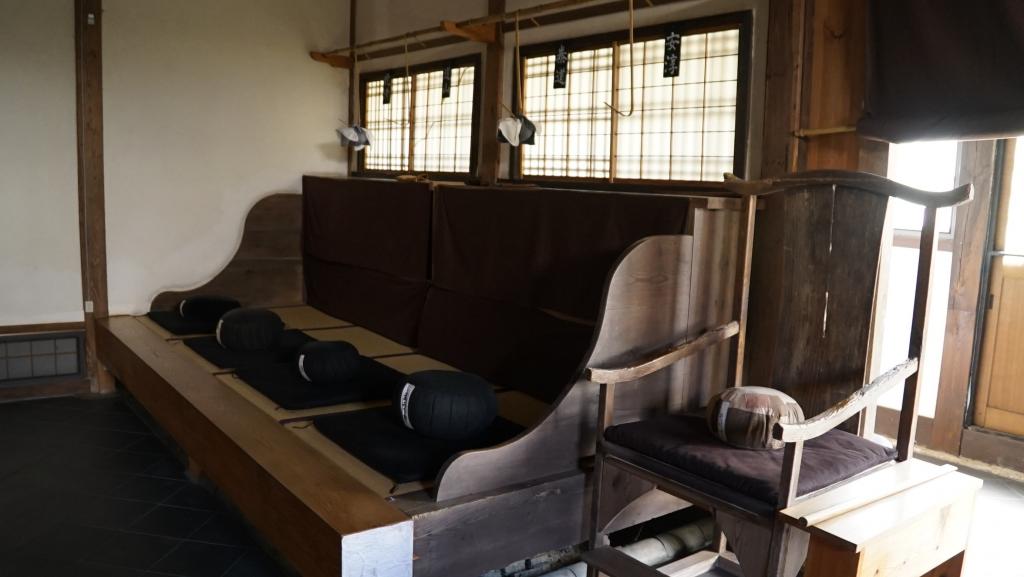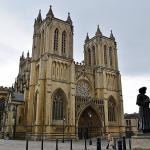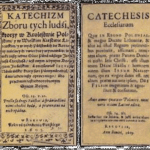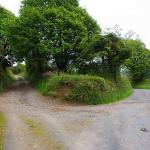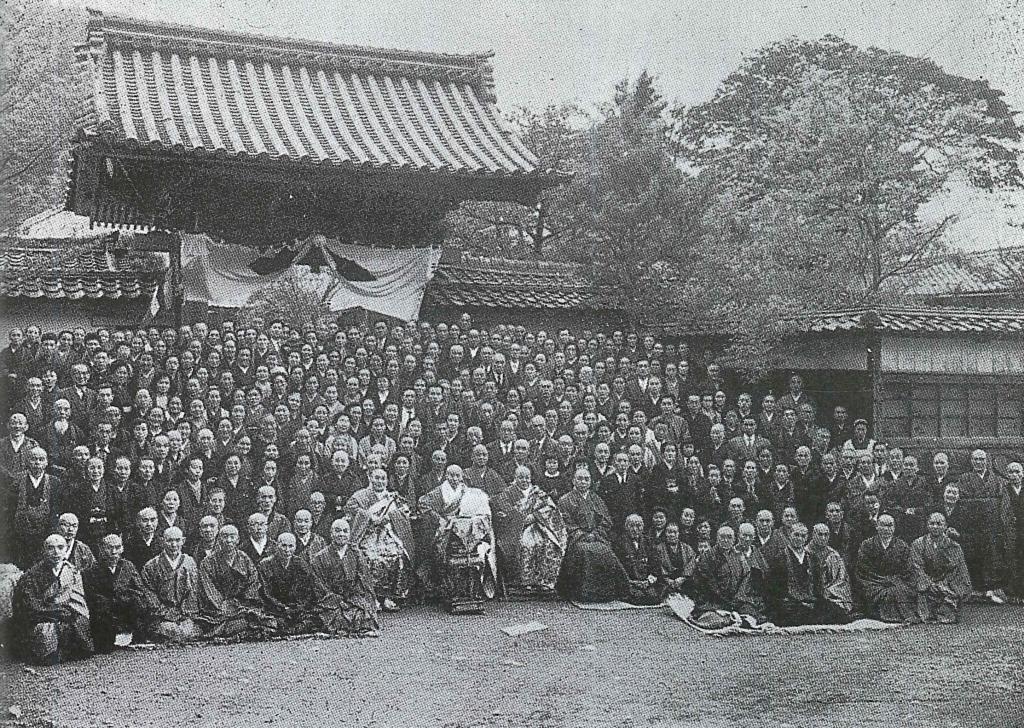
By guest blogger, Bukkokuji monk, Kogen Czarnik
Living in the 21st century, it is hard to be an optimist about the future. With mass extinction of species, disappearance of ice caps, rapid loss of rainforests, and more – we have plenty to worry about. There is another extinction taking place, that admittedly might not be as urgent a problem as those mentioned above, but nevertheless, for us Zen practitioners, an important one to notice. It is the dying out of the Zen tradition in Japan, which has been happening for some time already, but has accelerated very much in recent years, and has now become an undeniable reality during the pandemic. Right now in the entire Soto School there are only 4 monasteries with more than 10 monks. If you don’t know much about Zen in Japan, I can assure you that it is a shocking number. Just over a decade ago there were at least a dozen temples that size. So how did we get here, what is the situation and why does it matter?
Probably anyone who reads Dosho’s blog is by now familiar with the challenges that Buddhism in Japan encountered during the Meiji era. (1) 20,000 temples were destroyed between 1872-76, lands were confiscated, monks were forced to become regular citizens and embrace family life etc. The latter change was in the long run the most consequential. When an abbot of a temple has a family and children, naturally he wants his children to inherit the temple from him and spend his last years in retirement taken care of by his family. (2) The result is that over 95% of all Japanese priests nowadays are born into priesthood, not called to it because of the great matter of life and death. The Soto School makes a survey every 10 years, and this data shows that each time there are less and less priests who practice zazen at all; running a temple is just a job for them.
Secondly, there are socio-cultural reasons behind today’s crisis. Of course secularisation of societies is happening all around the globe, not only in Japan. In 1995, 55.5% of people in Japan reported their household being Buddhist. In 2001 it was 39.3%. (3) I have no 2021 numbers but I doubt they went up. Japan also has one of the lowest birth rates on earth, and adding to that, the trend of younger generations moving out from the countryside to the cities, means less and less parishioners are attending temples in the deserted rural areas. This has led to the situation where many priests are unable to support their family from the money received through the temple, and they have to get a second job. There is a nice article about this in the Guardian here. Please note that it was written before the pandemic, and for the last two years the biggest yearly revenue of every temple – the obon chanting in parishioners’ houses for their ancestors – has been cancelled. Many of the monks are afraid that people will not want to go back to regular obon observances after the pandemic is over. This will only further speed up the decline in temple numbers.
Lastly, Japan is also changing culturally. The caste system was officially abolished only in 1871. In 1960 still the majority of marriages were arranged. Being able to choose one’s destiny was an idea embraced only gradually in Japan. But now more and more sons of priests are not giving in to the pressure to ordain and inherit the family business. It seems that the number of monks is shrinking even faster than the number of parishioners, and it is not uncommon to hear about a temple with hundreds of member families desperately looking for a resident priest and not being able to find one.
So what is the situation now? Some years ago a survey conducted by the Japanese Agency of Cultural Affairs showed that the ratio of monks to temples was 1.14 to 1 for the Soto School, and 1.02 to 1 for the Rinzai School. Now with the pandemic and the developments mentioned above, it is likely less than that. So there might already be more temples than monks, and many temples even now are without a resident priest. In the Soto School there are only four monasteries that have ten or more monastic residents. (4) Those are the two main temples, Eihei-ji (120 monks) and Soji-ji (60), and then the Eihei-ji Tokyo branch, Chokoku-ji (20) and Tosho-ji (in Okayama prefecture, 15). Next is the nunnery Aichi Nisodo Shobo-ji (7 nuns) and in the rest of the training monasteries (senmon sodo) there might be somewhere between zero and five unsui. Recently the Soto School decided to close down ten out of thirty of their training monasteries , among them Hosshin-ji, Hokyo-ji and Daijo-ji, three famous training temples. (5) If you are practicing Soto Zen in the West there might be a 50% chance that your Zen Center belongs to Sogaku Harada Roshi’s lineage. This lineage, mostly through the prominent Yasutani line (and it’s Maezumi, Kapleau and Yamada branches), but also through Tangen Harada and Tetsugyu Ban lines, is greatly influential in the West. Sogaku Roshi took over Hosshin-ji in January 1922, almost exactly one-hundred years ago, and since then it has given birth to many wonderful teachers. Now the “devil’s dojo” famous for its strict practice is becoming just another temple whose primary function is holding funerals and memorials for it’s members. Even other training monasteries which retained their official status are in reality mostly empty.
From a purely Dharmic point of view, the biggest problem is that many teachers have passed away without a successor, and many lineages that were very vital even a few decades ago are now dying out.
Zen teachers and students have been repeating the phrase “Zen in Japan is dead” for decades already, so what, you may ask, is the big deal? Why would it matter for practitioners in the West? Interestingly, this phrase was coined by Japanese teachers when Japanese Zen was still pretty alive. A BBC documentary from 1977 on world religions captures a memorable moment in which the reporter asks Yamada Mumon Roshi, head of the Myoshin-ji sect of the Rinzai School, and president of Hanazono University, about his declaration that Zen is dead in Japan, and should be reimported from America. Mumon Roshi replies with spontaneous laughter, “Indeed, that’s how it has become.” (6) Mumon Roshi attended the opening ceremony of Daibosatsu Zendo and visited Tassajara Zen Mountain Center, and he must have loved the fact that lay people were coming not for priest certification or out of familial obligation, but purely for practice. There was a freshness in it that had already been lost in post-Meiji Japan. But at this time, when Zen was just beginning in the West, there were still dozens of great Zen masters teaching in Japanese monasteries with lively and intense practice. Each of the Japanese teachers who came to the West had undergone some of this traditional training.
Over the next forty years, a couple of generations of Western practitioners were still able to go to Japan to immerse themselves in the fire of traditional practice, rarely found in the West, before returning to their home countries. For some, those were the most formative years of their practice. Many of the teachers currently sharing the Dharma in the West, or their teachers, had undergone some training in Japan and found a great value in it. Others might have found all they needed for realization in western settings, and that is great. I am writing from the perspective of someone who trained for over a decade in monasteries in Japan (and South Korea), and found traditional monastic training immensely valuable.
Not only was the intensity of practice on a whole other level from what I experienced in the West, but there was also a quality of becoming and acting as one body with the entire community – especially helpful for people from the individualistic West. Forgetting personal preference, opinions, understandings, and just surrendering to the relentless sucession of forms and practices designed to point continuously to true nature, has great power. Of course, everybody who participates in a sesshin in any Zen center can have this experience to some extent, but in traditional monastery life it doesn’t end with the end of sesshin. It is a way of living that permeates one’s whole being, demanding continual surrender of self-centered perspectives. At my home temple, Bukkoku-ji, under Tangen Roshi, we were not allowed to read, write, go outside the gate or talk unnecessarily to each other. 365 days a year, every single morning started with zazen and chanting, all meals were formal and silent, every night there was zazen from 6:20-9pm. (7) We did everything together. When we washed dishes, after drying a plate that belonged to a cupboard on the other side of the kitchen I could hand it out and let go of it with closed eyes, being sure that some other hand would pick it up in silence and put it in the right place. Without personal space or time, we did zazen, takuhatsu (begging), ate, slept, prostrated, worked and chanted as one. I knew almost nothing about my Dharma brothers – their education, where they were born etc – but we knew each other intimately, like the left hand knows the right.
Unlike at Bukkoku-ji, at many other training monasteries the majority of monks were sons of priests who would drop practice after leaving the sodo, yet still they were providing a container into which a genuine seeker could enter, train, awaken, do post awakening-training, and later teach others. Now however these monasteries are struggling to survive, and soon the traditional training might not be available at all for the seekers called to it, and we will have only the modified options we have created for ourselves in the West.
Some people seem to think that the sapling of this old dying tree was already transplanted to new soil and is growing strong. But is it? Most of the older Zen centers in the West have fewer students than at the time of their founding teacher. Many western Zen students are baby boomers, and there are not as many young people who choose to practice Zen. Some teachers are concerned that in Western lineages Dharma transmission has lost its meaning, that becoming a Zen teacher is just a career path in some cases, and that students don’t sit zazen and sesshin as much as they did back in the early days. This sounds eerily similar to the observations made about the state of Zen in Japan, as if in the West we have repeated the cycle that happened in Japan over 800 years in less than 80. Will we be able to avoid the sad fate of our mother tradition? Will our practice be that authentic, our vow that firm and our realization that deep to produce here in the West enough clear-eyed teachers to carry on the lamp of Dharma without the fuel of inspiration brought here by Asian teachers, and without the lamp-shade of traditional monasteries that protected it from the winds of the world for the last 2500 years? The answer to that question is in our hands.
(1) Meiji era, 1868-1912.
(2) Most of the few nuns in Japan remain celibate, so I will proceed with male pronouns only.
(3) Data from publication by Soto School “Priest, his role and challenges” , 2008 “僧侶その役割と課題”.
(4) As each of the sects of the Rinzai School is governed separately, it is more difficult to get information without calling each of the over 40 senmon sodos. The numbers in them tend to be more evenly spread, as temples belonging to each sect are sending their monks for training to the sodo of their sect, unlike in the Soto School, where over 50% are gathered in Eihei-ji. But to briefly illustrate, Myoshin-ji presently has 12 monks, Ryutaku-ji has 5 monks, and Shogen-ji has 9. In comparison, when Sogaku Harada Roshi practiced at Shogen-ji in the 1890’s, there were close to 100 monks in training (unsui) there.
(5) The remaining ones are: Myoko-ji, Kosho-ji, Saiyo-ji, Kokoku-ji, Chokoku-ji, Daiei-ji and Myogon-ji.
(6) I recommend watching the full documentary here, it includes rare footage and interviews with Mumon Yamada Roshi, Nanrei Kobori Roshi and Sogen Omori Roshi. Mumon Roshi’s interview starts at 45:00.
(7) The only exception was at the end of winter ango at the winter solstice night where dinner was informal and instead of evening zazen there was a celebration, all together eating and singing.

